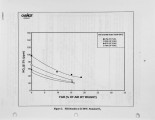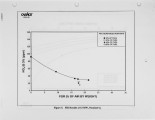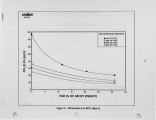| OCR Text |
Show flue gas as the fuel diluent, FIR has the potential to provide comparable NOx reductions with low operating costs, 111aking the FIR process attractive for a wide range of gas-fired boilers and heaters. Introduction Fuel injection recirculation is an alternative combustion-based NOx emission control technique in which the fuel is diluted with an inen gas prior to combustion. The process is applicable to gas-fired boilers, heaters, and other combustion equipment. Available inert gases include flue gas and steam. Previously, Camot perfonned a laboratory evaluation of the process using a 2 M:MBtu/hr boiler. The results of this evaluation showed that FIR is more effective than conventional windbox flue gas recirculation (FGR) in reducing NOx emissions. In addition, the two techniques are somewhat additive in that lower overall emissions can be achieved when both techniques are used together. Based on the favorable results obtained in the laboratory evaluation, the FIR process was evaluated on a small utility boiler. The program was co-sponsored by the Los Angeles Department of Water & Power, Southern California Edison Company, and Southern California Gas Company. The demonstration was perfonned at the Southern California Edison Company's Highgrove Generating Station, Unit 3. Highgrove Unit 3 is a 45 MW gas-fIred boiler equipped with conventional FGR. To minimize the cost of the test program, saturated steam from the boiler was selected as the fuel diluent for FIR. The steam was injected and mixed with the fuel in the fuel header upstream of the burners. The effectiveness of FIR at reduced boiler loads is of particular interest because the high excess O2 at low loads can result in disproportionately high NOx and other NOx control techniques, including selective catalytic reduction (SCR)~ may have limited effectiveness at very low boiler loads. For this reason and to avoid the need to redesign the burner fuel nozzles, testing was limited to approximately one-half of the rated capacity of the boiler. Process Description Highgrove Unit 3 Higbgrove Unit 3 was built by Combustion Engineering in 1952 and has a balanced draft boiler designed to fire natural gas or fuel oil. It is equipped with six burners, arranged in two rows of three on the front wall. The unit is designed to produce 425,000 lb/hr of steam at 950°F and 1,300 psig, resulting in electrical generation of about 45 MW. The boiler is equipped with primary and secondary superheaters, an economizer, and a Ljungstrom air heater. The unit does not have steam reheat. In 1980, FGR was installed on the unit and the original Peabody burners were replaced with CEA low excess air burners. FIR System Steam served as the inert material injected into the fuel gas during this demonstration. Saturated steam was obtained from the auxiliary steam line that is supplied by the main steam A054E562.T |















